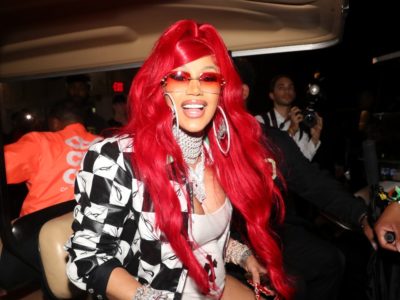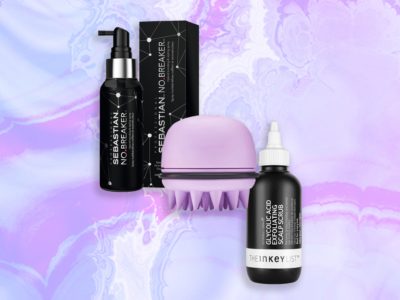
Traditional keratin straightening treatments, by contrast, infuse hair with formaldehyde-derived ingredients such as methylene glycol which — when paired with extreme heat such as flat ironing or blow-drying — bond the chemicals to the proteins within the hair. This treatment can superficially straighten hair for up to three months, but it will eventually wash away. It’s worth noting that when the ingredients in these treatments are heated or mixed with water, formaldehyde, a carcinogen which can be dangerous to inhale, is released. Recently, though, many formaldehyde-free alternatives have become available. These use glyoxylic acid or a derivative to achieve a similar smoothing effect.
Faux Curls
The grass is always greener, right? Here’s how to create the curls of your dreams even if you’ve got naturally straight hair. Just remember, changing the shape of your hair — whether temporarily with heat or permanently with chemicals — requires the bonds in your hair to be compromised, thus creating damage. So proceed with caution.
How Do You Create Faux Curls?
Remember those disulfide bonds we said determine the shape of your hair once it’s grown out of your head? These bonds can be temporarily broken by heat, allowing hair to be rearranged into new structures that stay in place as they cool, taking it from straight to curly and vice versa.
When it comes to getting straight hair to hold a curl, there are a number of factors that can cause the operation to fall flat. These include using thick products that can make hair stringy, or applying any product at the wrong time. The best time to apply products to hair you’re planning on curling is the same as with natural curls: when the hair is sopping wet. While you’re at it, be sure to distribute the product evenly.
But if it’s humid or rainy out, you might want to reconsider your game plan. As Douglas explains, heat-styling works, in part, by breaking hydrogen bonds — as in, the H in H20 — from the hair. “You’re literally pulling the [hydrogen] off the hair,” she says. Wet or humid weather reintroduces that hydrogen right back into strands, which means they’ll revert back to their true shape.
A more permanent alternative to heat-styling is accurately called “the perm,” which uses chemicals to break down the bonds within hair and reform them in a new shape, either straight (a relaxer) or curly. To permanently add waves or curls to straight hair, it’s usually wrapped in rods and set into its new shape before the chemical solution is applied. The bonds in the hair are then disrupted, reshaped, and neutralized, freezing the bonds in the hair into their new shape.
Our Editors’ Favorite Curly Hair Products
As much as our hosts Michelle and Jenny know about curls from working at Allure, they don’t have curly hair themselves. So they invited three colleagues — Features Director Jessica Cruel, Digital Staff Writer Nicola Dall’Asen, and Digital Editor Jihan Forbes — to share the products that put a spring in their curly strands.
Jessica’s Current Favorites
Jessica describes her tight curls as mostly 4B, and says the most important step in her hair routine is Philip Kingsley Elasticizer Deep-Conditioning Treatment, which helps detangle and moisturize before washing. Her first in-shower step is TPH by Taraji Never Salty scalp scrub, which she says helps hydrate dry patches and cleanse her scalp.





